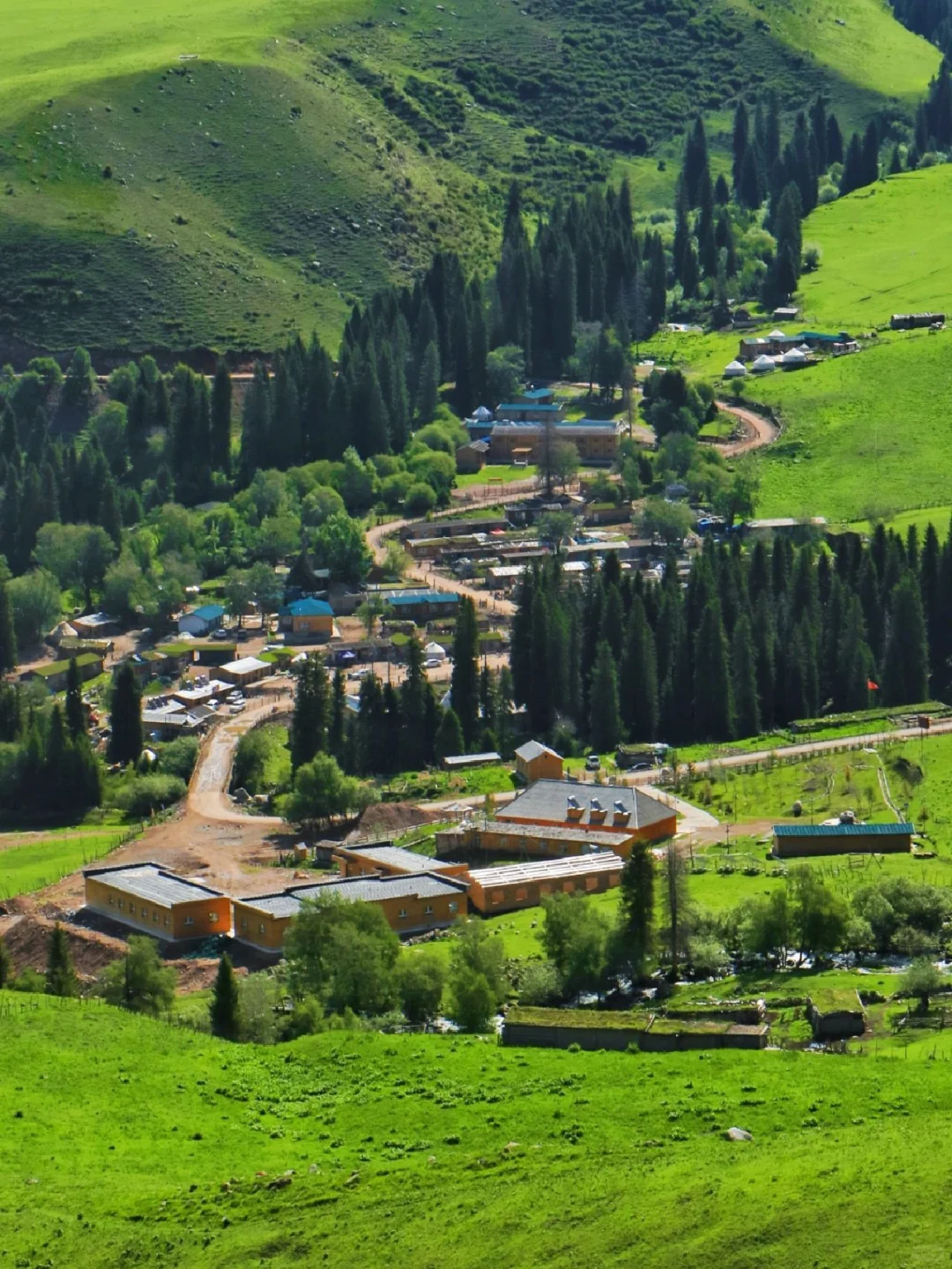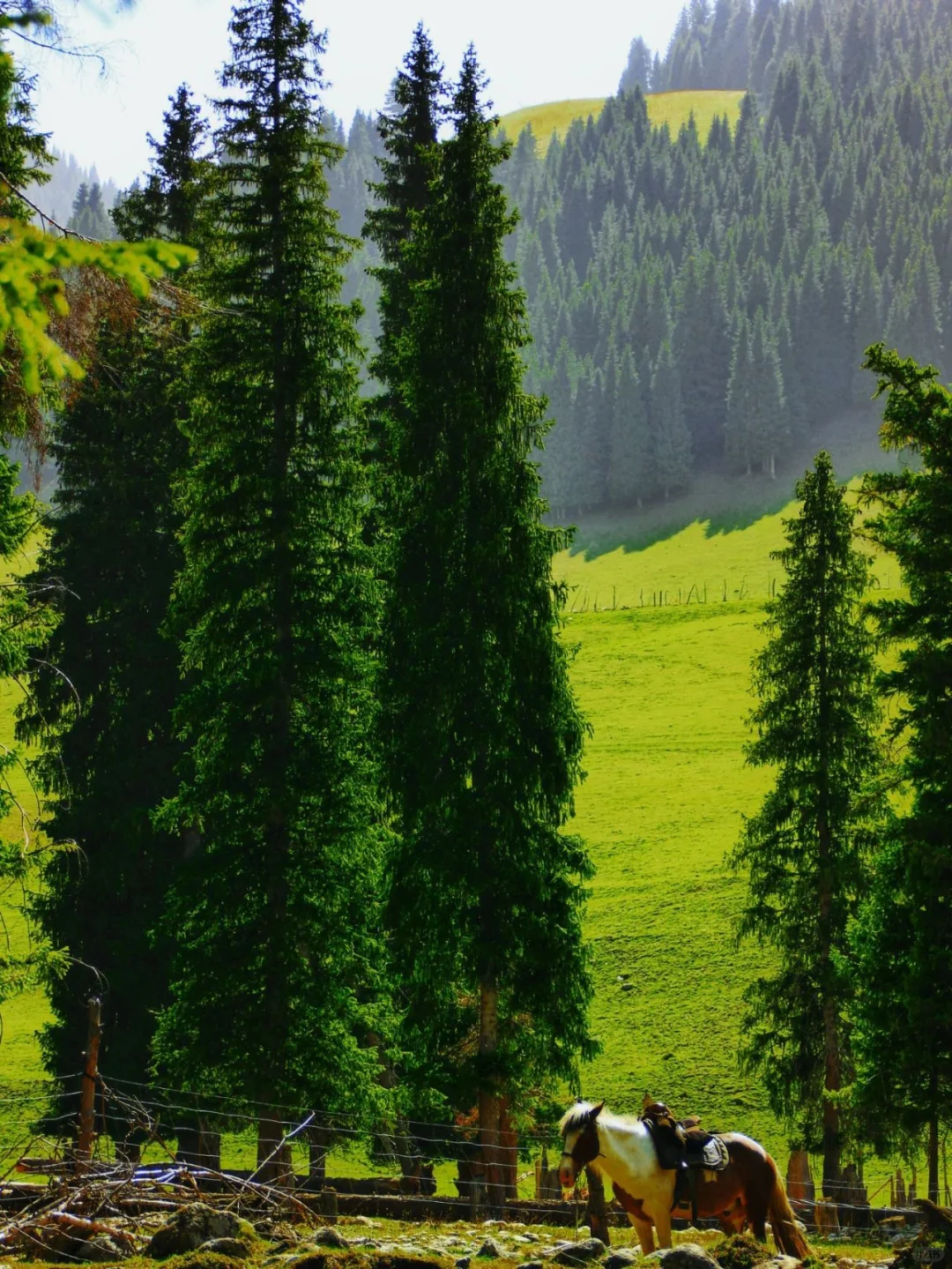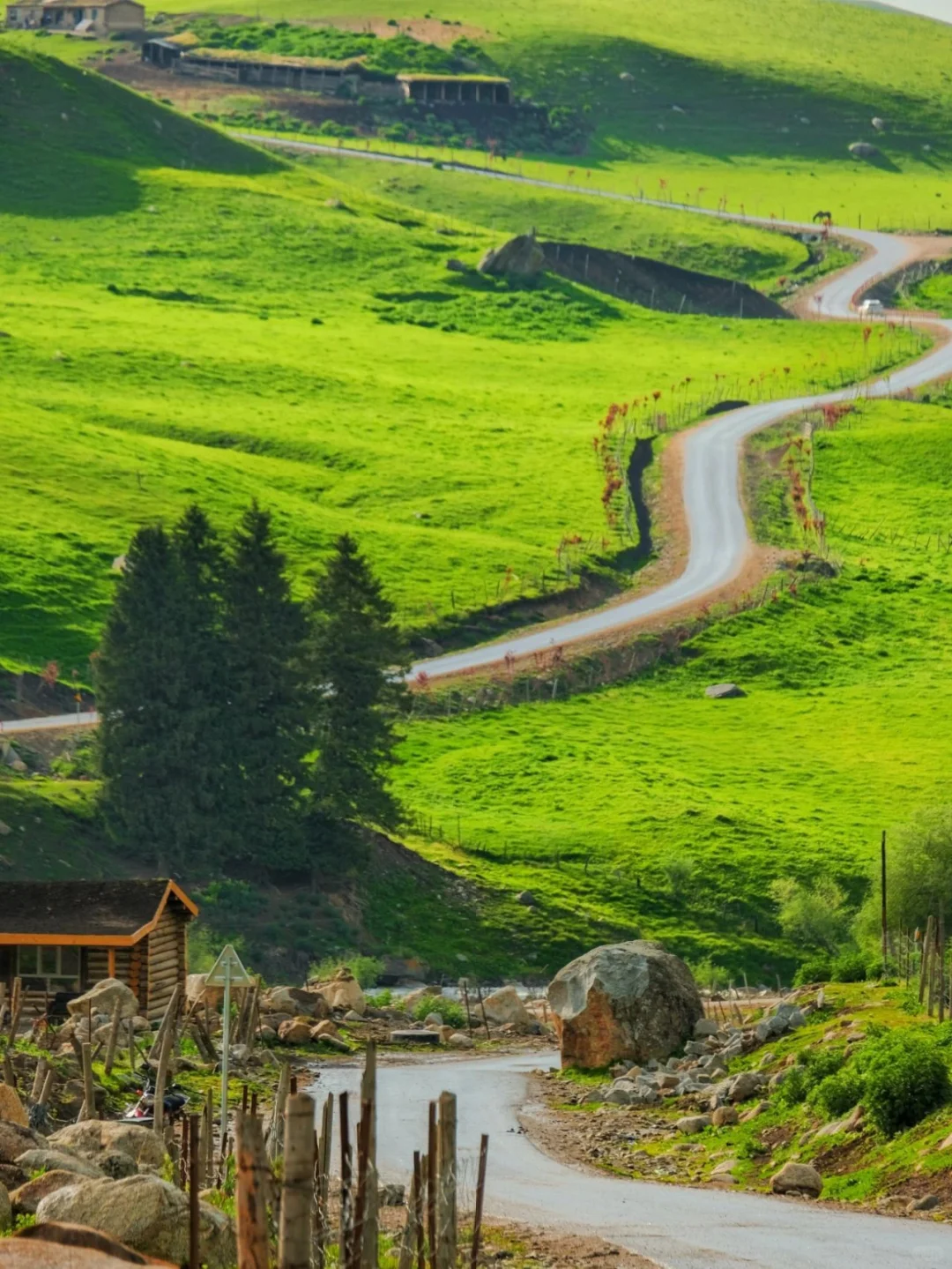A comprehensive travel guide to the Mengkte Ancient Trail, featuring ticket information, road conditions, photography spots, and essential tips to ensure a worry-free journey!

Last July, I set my navigation to "Qiongku Shitai" for the first time. When I drove out of Tekes County with just half a tank of gas, I nearly got stranded halfway—who knew it was 110 kilometers over four mountains without a gas station in sight? Along the way, I was stopped by cows and sheep, dazzled by the spruces lining the road, and blown away by the sudden appearance of the Koksu Grand Canyon. My backside was sore, but my eyes felt like they were getting a spa treatment. Once I arrived at the village and saw wooden cabins with smoke rising from their chimneys, cows tied up at the door, and wildflowers bursting at my feet, one thought lingered in my mind: the scenes from a fairytale are truly brought into reality.
That was my first impression of Qiongku Shitai. No filters, no exaggeration, just the four words “I don’t want to leave” written all over my face.
It’s not Switzerland or New Zealand, but Xinjiang’s Yili in summer. Blue sky + white clouds + snow-capped mountains + wooden cabins + grasslands—the picture that others spend a fortune flying abroad to see is all packaged and presented to you here in one go. Plus, it’s not a stiff tourist spot; it’s a genuine village where real people live. The wooden walls have darkened in the sun, dried milk curds hang from the door frames, and an old lady sits at the door weaving a whip…every shot you take feels cinematic.
Fuel Anxiety
Make sure to fill your tank before you leave! There are no gas stations from Tekes County until the village, and that half tank can leave you stuck on a hillside—don’t ask me how I know.
Road Conditions
The entire route is paved, but it’s narrow and winding with lots of turns. When you meet oncoming traffic, just shout a little. Going downhill and sharp turns will wear out your brakes. If your driving skills aren't great, no worries, just take it slow. The scenery changes in four segments:

Navigation Setup
Search for "Qiongku Shitai Scenic Area" in Gaode or Baidu, and it’ll lead you directly into the village, no chance of getting lost.
Timing
I left Tekes at 9:30 AM and arrived in the village by 1 PM, stopping four times for pictures and once to let some cows pass.
| Location/Activity | Highlights and Tips | Suggested Time |
|---|---|---|
| Flower Terrace | Riding a horse there is the easiest way; from June to August, wild peonies and gold lotus cover the ground like a carpet. | 2.5 hours round trip |
| Entrance to the Wusun Ancient Road | Easy hike, just climb one slope, and you can shoot a picture of the whole village backed by the snow-capped mountains. | 2 hours |
| Sunset Viewing Point | A 15-minute climb up from the village, the evening glow turns the spruces rose-colored. | 1 hour |
| Horse Riding Across Streams | Locals will take you to a quiet valley across a small stream, 80 Yuan/hour, it hurts but it’s worth it. | 1-3 hours |
| Cows and Sheep Photo Ops | Just stand by the fence, curious little lambs will come right up to you. Watch your step for cow dung. | As you go, snap pictures |
The day I went horse riding, the guy leading the horse, Aibulan, only knew two phrases in Chinese: slow down and take a picture. But he got the horse running fast, and I felt like I was doing acrobatics on the saddle. The moment I dismounted, my thighs were shaking, but seeing the vast untouched flower carpet behind me made it all worth it.

Even at 10 PM, it was still bright out; the clouds looked like a color palette. I laid down my mat on the grass and enjoyed a simple picnic of yogurt, naan, and watermelon that felt like Michelin dining. There was no phone signal, just the sound of the wind rustling through the grass, feeling as refreshing as a reboot.
| Restaurant/Stand | Recommended Dishes | Average Cost | My Real Thoughts |
|---|---|---|---|
| Ahet Restaurant at the village entrance | Hand-grabbed lamb + yogurt | 90 Yuan | The meat falls apart at the touch of chopsticks; the yogurt is three times thicker than supermarket ones. |
| Homestay Kitchen | Mixed noodles/fried rice | 40-50 Yuan | Limited ingredients but freshly made; adjust the seasoning to your liking, just remember to ask for it not spicy in advance. |
| Mobile Baozi Stand | Freshly baked lamb baozi | 6 Yuan each | Juicy in every bite; waiting 10 minutes is worth it. |
A small tip: The village relies on supplies from outside, so prices are proportionate to expectations; always ask “how much” before ordering.
In Qiongku Shitai, all accommodations are wooden cabins, but there are huge differences.
Booking tip: Search for "Qiongku Shitai Accommodation" in mini programs, book 3 weeks in advance. The day before peak season, most options are just beds left.

| Category | List/Prices | Notes |
|---|---|---|
| Car-related | 300+ for gas, 0 Yuan for tolls | Currently, all expressways in Xinjiang are free. |
| Entrance Fees | 0 Yuan | No entrance fee, parking lot at the village costs 10 Yuan. |
| Horse Riding | 80 Yuan/hour or 300 Yuan/day | Swap to hiking if your butt hurts. |
| Accommodation | 250-400 Yuan/night | 8th month is the most expensive during peak season; bargaining skills matter. |
| Food | 100 Yuan per person per day | Naan + grilled meat + yogurt is filling. |
| Gear | Insulated jacket + sunblock + power bank + thermos | Big temperature difference between day and night; the sun is harsh. |
On the way back, I woke up at 6 AM, and a thick fog engulfed the village, only the rooftops were visible. Before starting the car, I rolled down the window and took a deep breath of the smell of grass and wood, counting down three seconds in my mind: see you next time, Qiongku Shitai.
Explore the enchanting blue hour in Hot Spring County, featuring breathtaking views of Lotus Pool hot springs, essential tips, local food recommendations, and accommodation insights.
This article provides a detailed overview of the nine top attractions in Kashgar, including the Kashgar Old Town and the Id Kah Mosque, highlighting the best times to visit and local delicacies, making it perfect for leisurely travelers.
Venture into the Mengketu Ancient Path, a historic trail that leads you into the stunning natural secrets of the Tianshan Mountains. Experience a five-day hike through majestic snow-capped peaks, serene lakes, and lush forests, while immersing yourself in the unique landscapes and rich cultural heritage.
Want to see more cultural experiences like this?
Follow ChinaTrip, explore the next destination, and discover more ways Chinese people travel.
Browse More ArticlesA comprehensive travel guide to the Mengkte Ancient Trail, featuring ticket information, road conditions, photography spots, and essential tips to ensure a worry-free journey!

This travel guide to Tekes Bagua City highlights must-see attractions, food recommendations, transportation tips, nearby sights, and essential precautions, helping you enjoy this unique city without traffic lights!

This article explores two off-the-beaten-path destinations in Tekes, Xinjiang, featuring the stunning views of Crocodile Bay and Hukou Waterfall, along with tips to avoid the crowds.

The beauty of Xia Ta feels almost surreal. To truly appreciate the ancient Xia Ta Trail, it's essential to prioritize sunny days, utilize shuttle buses for hiking, and consider horseback riding in advance. Careful planning and timing are crucial to avoid poor weather and road conditions that could dampen the travel experience.

A comprehensive self-driving guide for Xinjiang from June to September, highlighting the Ili Loop and key attractions such as the Duku Highway, Nalati, and Tekes, perfect for nature lovers and photography enthusiasts.
